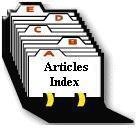
American Pigeon Journal
July 1972, page 402.
New Pigeon Pellets From
Soybeans.
by Robert J. Mangile
For some years now, the Pigeon Fancy has been searching for an inexpensive feed that is both nutritionally suitable as well as palatable to the pigeons. A recent article in the APJ (June issue) mentions feeding cooked soybeans. Unfortunately, the project was halted and further information is not available.With some personal coaxing by me, a grain mill operator in our town produced a pigeon pellet from which the basic ingredient was cooked soybean meal. Vitamins- (A, B and B-complex) were added; phosphate, calcium, whey (the watery portion of milk), and a wood binder used to hold the ingredients together was also added.
The purpose of the pellet was to add protein to the diet, as well as other nutrients and to reduce cost of feeding. The protein analysis was calculated to contain approximately 35% protein, which is quite high.
My first usage was not miraculous by any means but the birds did eat the pellets rather well. A random mixture of about 10% pellets was used in our regular purchased ration with legume seeds that contained about 15% protein.
Results were very satisfactory but the pellets were the last to be eaten. Next I mixed the pellets with whole yellow corn, wheat, and milo in about a four to one ratio or very roughly 20% pellets. This should have been about 15% protein, which is sufficient for pigeons. No other legume seeds in ratio.
The results were still satisfactory, but again the pellets remained the last to be eaten. Squabs did very well but their droppings were rather sticky and formed balls on their toes. Much more so than would be expected from a total grain ration. Otherwise everything went well.
Presently, I mix the pellet, corn, wheat and milo ration (equal parts) with the purchased ration and find that it works very well. My pigeons (Racing Homers) are trained and flown in races in excess of 300 miles with no noticeable bad signs due to the pellets. But again, the pellets generally remain the last to be eaten - but not always.
Upon considering my experiences over the past year or so, with soybean pigeon pellets, I might suggest that it be used as a supplement rather than the total protein source for the following reasons: (1) excessive amounts will cause balls to form on the toes of nestlings that may become troublesome if not given constant attention, (2) the birds apparently would rather eat grain and if deprived of a more satisfying feed may have some unappreciable side effect on the birds, especially where birds are given liberty and can wander off in search of more palatable food items, (3) that there is still more to be learned from such a food source and that it may be considered as an experiment rather than a well established feed.
On the positive side, however, is the fact that vitamins and minerals as well as medications can be added to the birds' diet through the pellets. These ingredients can be added to suit the user's need with each new batch of pellets. And, the reduction in feed cost may be considerable if several hundred pigeons are kept.
I suppose that any sized breeds can manage such pellets. My white doves eat them heartily and without variation the last grains to be eaten are the vetch 'and peas. The pellets are almost never remaining at feeding time. This point in itself is one to be considered closely.
# # #
